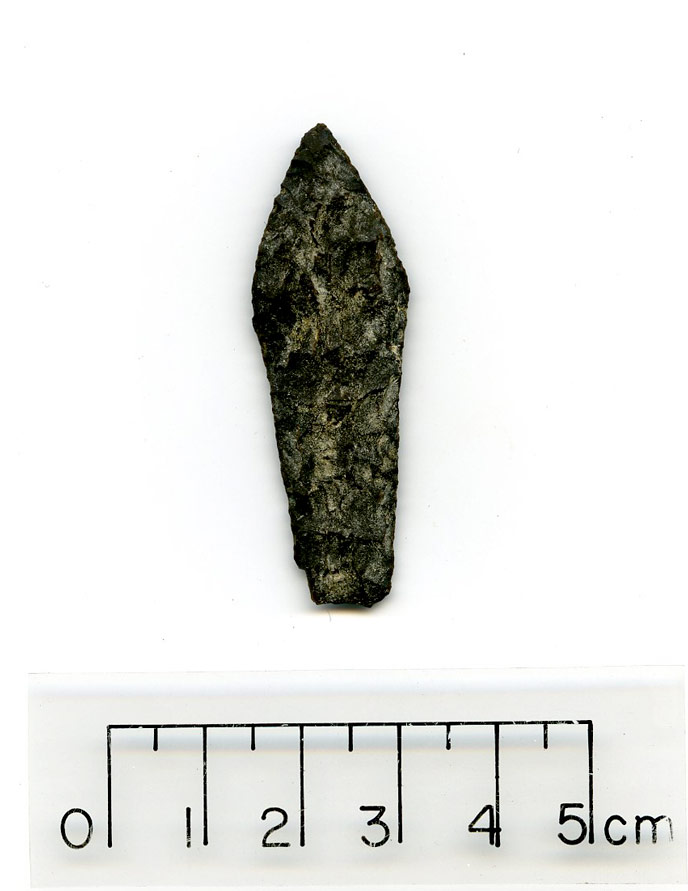In an ideal world, all artifacts would be found in context, allowing us to know a more complete a story about the people who made them and their lives, but sometimes we just have the artifact. Even if we don’t have context, archeologist learn how to read the artifact—what message can the object itself tell us about the past? What can the shape of this point tell us? What can the location on where it was found tell us?

This point is what is known as a contracting lanceolate point. Lanceolate means ‘shaped like the head of a lance’ or ‘tapering to a point at each end.’ Contracting refers to the base of the point—the bottom half of the point decreases in size from top to bottom. This point would have been attached, or hafted, onto a shaft or handle with sinew or spruce roots below the shoulder, or the widest part of the object. Hafting makes artifacts more useful; the point can be thrown more effectively, leveraged better, and can fly farther and cause more damage. An axe is more effective when it’s attached to a handle!
This is backed up by examination of the artifact itself. The edges below the shoulder are not as sharp as the edges of the top of the point, which tells archeologists an object was hafted. This particular point is unusual, but archeologist have concluded based on its shape, it might fit within artifact assemblages from the Norton Tradition, which dates from about 1,700 years ago to 2,500 years ago.
So, based on its form, we know it was attached to a handle of some sort and used as a dart or a spear. What can the location where it was found tell us?
It was found on a landform on which not much archeological investigation has taken place, but an area that we know was occupied and used in the past. Recent archeological work in this area has led to the discovery of two significant prehistoric sites dating from 4,000 to 1,100 years ago, indicating a high site potential for this area. This point was not found in either of the two sites found in the area, but the date archeologists believe it was made certainly fits into the date ranges of known sites in the area.
